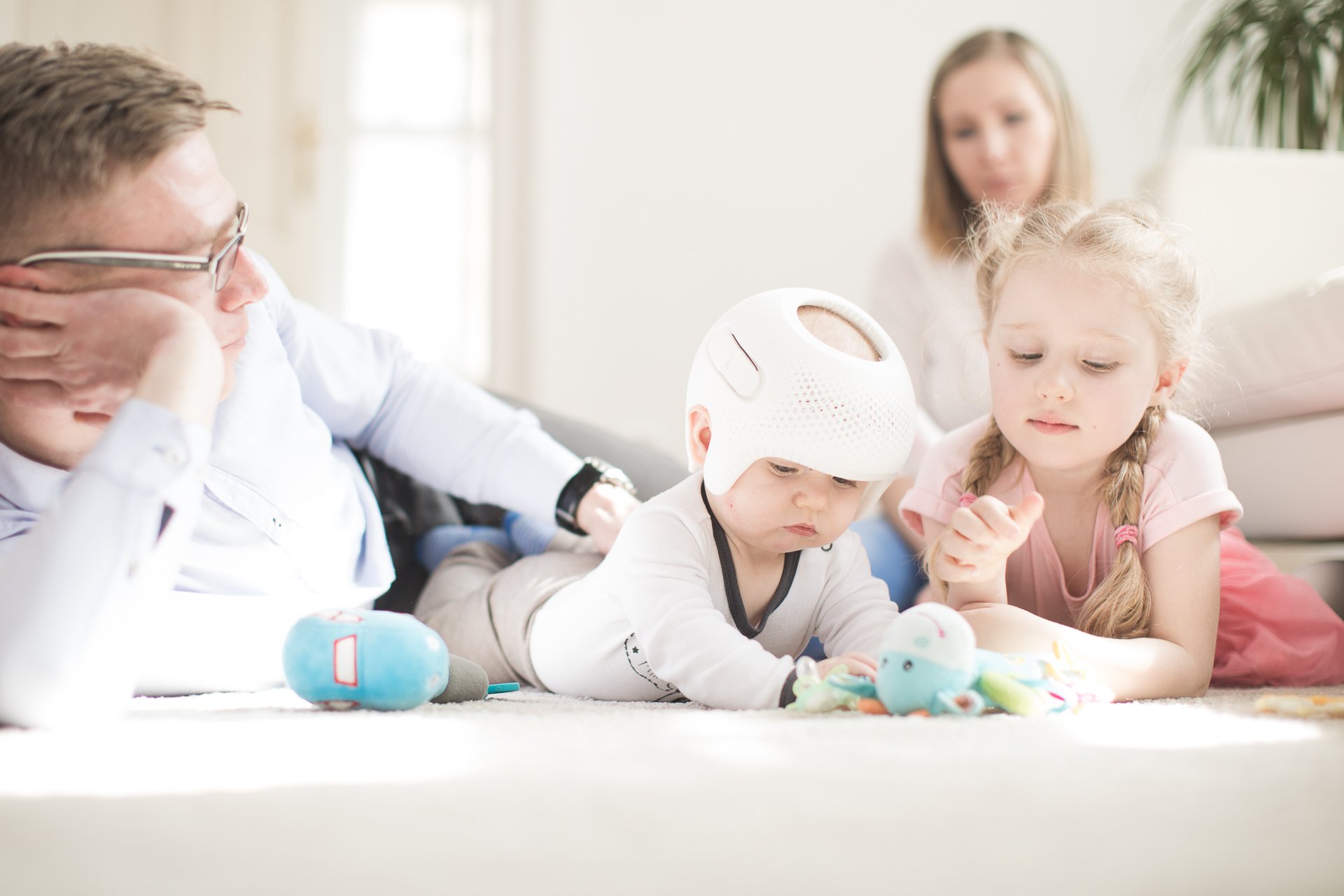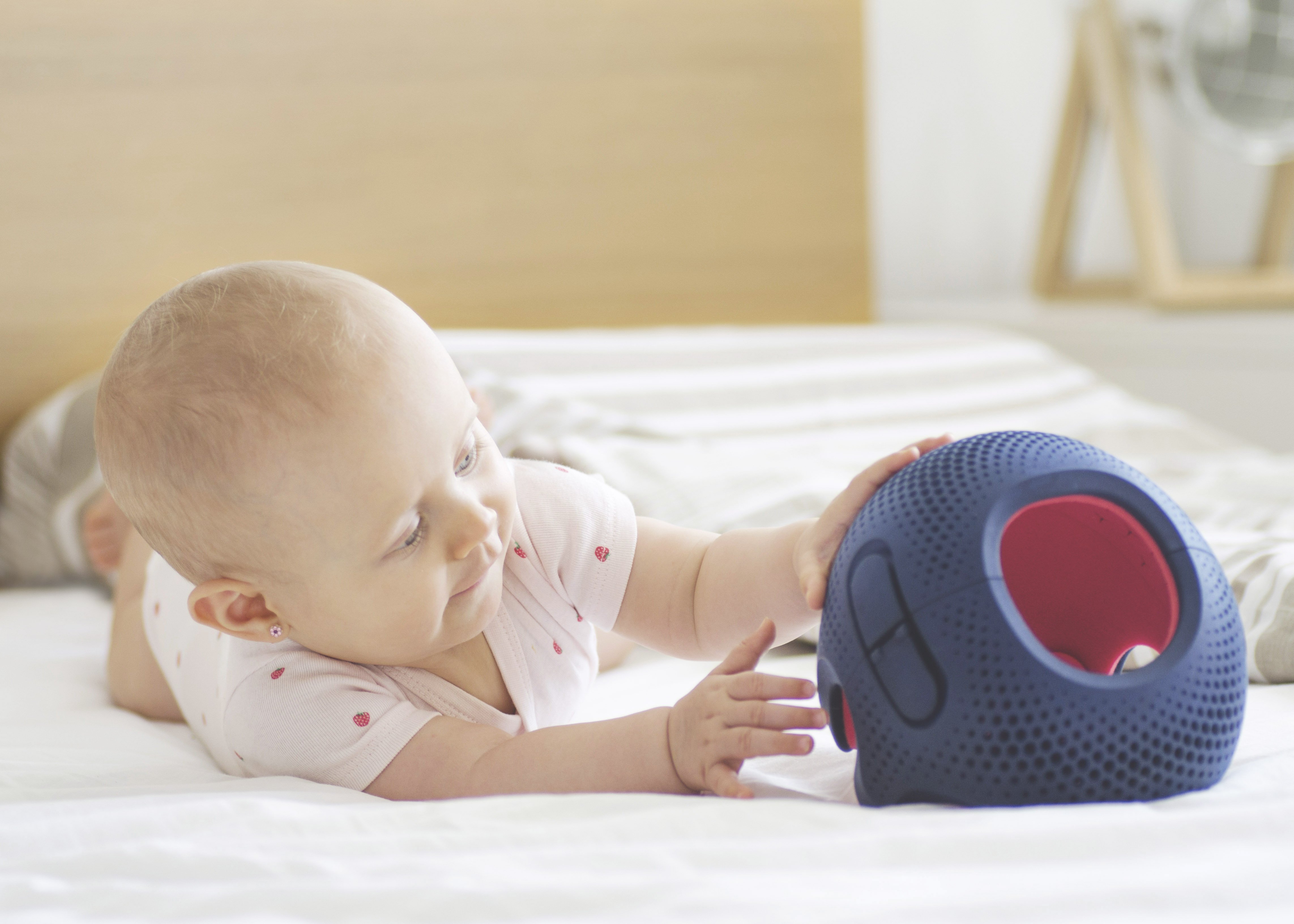
Helmets for flat head syndrome (also known as plagiocephaly helmets) are a method of gently correcting an infant’s head shape. They are only recommended for moderate to severe cases, and for babies aged between 4-14 months.
Provided you choose a reputable clinic, flat head helmets are a safe, trouble free and pain free treatment, and pose absolutely no threat to your baby’s development. So where have all these misconceptions come from?
Two Common Misconceptions Relating to Baby Helmets
“The helmets are harmful.”
A number of parents who come to see us are worried that baby helmets might restrict growth, leading to developmental problems. This is not the case. The TiMbandAir helmets are designed to allow growth to continue at a normal rate. We need this growth, as it is directed where the baby needs it in order to bring about correction, resulting in a more even head shape. A study published in Pediatric Neurosurgery (1999) confirms this.
In addition, baby helmets are heavily regulated, as are the clinicians who provide treatment. The helmets are categorised as a custom made, non-invasive treatment by the Medicines and Healthcare Products Regulatory Agency (MHRA), the UK medical products regulator. In other words, they are considered to present very little risk to the patient, and accordingly they are grouped in the same class as forceps, dressings and other orthotic devices such as knee bracing.
“The helmets are uncomfortable.”
Contrary to the information on the NHS Choices website, which says “the device may be uncomfortable, and there’s a risk it will cause pressure sores on your baby’s head.” As we have discussed in this post, this statement is a supposition. A well-fitting, correctly made helmet is more comfortable than a correctly fitted fracture or hip bracing cast – and will not give as many problems.
As the helmet can be removed for short periods of time, issues such as mild skin irritation, sweating and odours are easily rectified. Problems with accepting the helmet, and feeling hindered in cuddling because of it, are minimised by allowing short times for bathing and playing with your baby.
These minor issues are well known and easily remedied. There are several helmets and treatment providers available in the UK, and parents should research the background of each one before making a decision.
To our knowledge, no helmet gives as poor a result as those highlighted in a recent study from the Netherlands, which was damning in its condemnation of the results achieved by the unusual type of helmet that they supplied. The study also had significant limitations, which have been highlighted by Ellie Bloomer, Chair of the Craniofacial Society at the American Academy of Orthotists & Prosthetists, and by the Plastic Surgery Executive Committee of the American Association of Pediatrics.
The only other likely cause of an inadequate result is parental noncompliance. An earlier study in the Journal of Cranio-Maxillofacial Surgery (2012), Complications in Helmet Therapy, concludes that:
“Helmet therapy represents a safe therapeutic tool for the correction of positional cranial deformity.” And: “most complications can easily be avoided or eliminated by proper instruction of the parents.”
So, are there any risks associated with using baby helmets?
In answer to the question: “are there any risks?” we can say with conviction that the answer is “not to our knowledge”. All the empirically sound research carried out to date indicates that baby helmets are a safe and pain free treatment that poses no risk to development – provided they are fitted correctly by qualified Orthotists, and parents follow treatment regimes to the letter.
The side effects and complications experienced by parents are minimal and rare in the clinical and home environment, and certainly should not discourage parents from considering this kind of treatment.
The risks of not using a helmet are that that your baby will grow up with an lifelong cranial deformity, which will only be correctable by surgery once the baby is past 14 months of age. We regularly receive enquiries from parents of older children, and now young adults, asking if we can help. Sadly we cannot and if noticed, this is an issue which needs to be addressed earlier rather than later.
If you think your baby could benefit from a helmet for flat head syndrome, Technology in Motion can help. All of our helmets are lined with foam for extra comfort, and with over 100 babies undergoing treatment at any one time, you can rest assured that we have the experience required to oversee a safe, effective and pain-free correction.
Contact us to book your free appointment at your nearest clinic, or browse our website for more information on the service that we offer.


